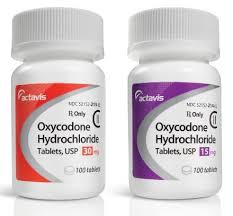Pharmacological profile of Oxycodone is the same as that of the morphine. Like codeine and hydrocodone, oxycodone is absorbed well after the oral intake, providing an anesthetic effect for at least half an hour. Oxycodone is usually issued in combination with other neopioide analgesics. Oxycodone is not used as an antitussive drug. In addition, the drug has a significant potential for the treatment of drug addiction.
Indications for use
Treatment of acute and chronic pains, anesthesia in oncology.
Directions for use
Analgesia: take 5-10 mg of the drug orally every 4-6 hours. The patients with renal or liver dysfunction can have the elimination disorders, accumulation and excess of sedative effect renal or liver dysfunction. Analgesia can be increased by the additional prescription of other narcotic drugs, NSAID, antidepressants and non-pharmacological treatment.
Elimination: in liver and kidneys.
Side effects
Cardiovascular system: hypotension, bradycardia, fainting.
Pulmonary system: depressed respiration.
CNS: sedative effect, drowsiness, euphoria, dysphoria and disorientation.
Kidneys: urinary retention.
GI: sickness, vomiting, stomachache, constipation, anorexia, liver dysfunction.
Eyes: miosis.
Allergic reactions: rash, urticaria,
Skin itching.
Contraindication
[tie_list type=”checklist”]
- kidney and liver disease;
- pregnancy;
- lactation period.
[/tie_list]
Pregnancy
Oxycodone passes through the placental barrier. So, during pregnancy it is used in strict accordance with the instructions. It is registered in low doses in the human milk. However, no side effects were noted in newborns.
Interaction with other drugs The effect is amplified by the simultaneous use of other narcotic drugs, NSAID, antidepressants, sedatives and alcohol. Smoking can reduce the effectiveness of Oxycodone.
Oxycodone can cause the patients’ addiction, manifested through the mental and physical symptoms after the drug withdrawal. Besides, the long-term use of drug can develop a tolerance that will require higher doses of a drug for the achievement of painkilling effect.
Alcohol can increase the effect of Oxycodone on the mental capacity and emotional state, causing drowsiness and mood swings. The patients must abstain from alcohol while taking Oxycodone.
Overdose
Symptoms: drowsiness, coma, respiratory arrest, asphyxia, heart arrhythmia, respiratory and metabolic acidosis, cardiovascular insufficiency, cardiac arrest and death.





